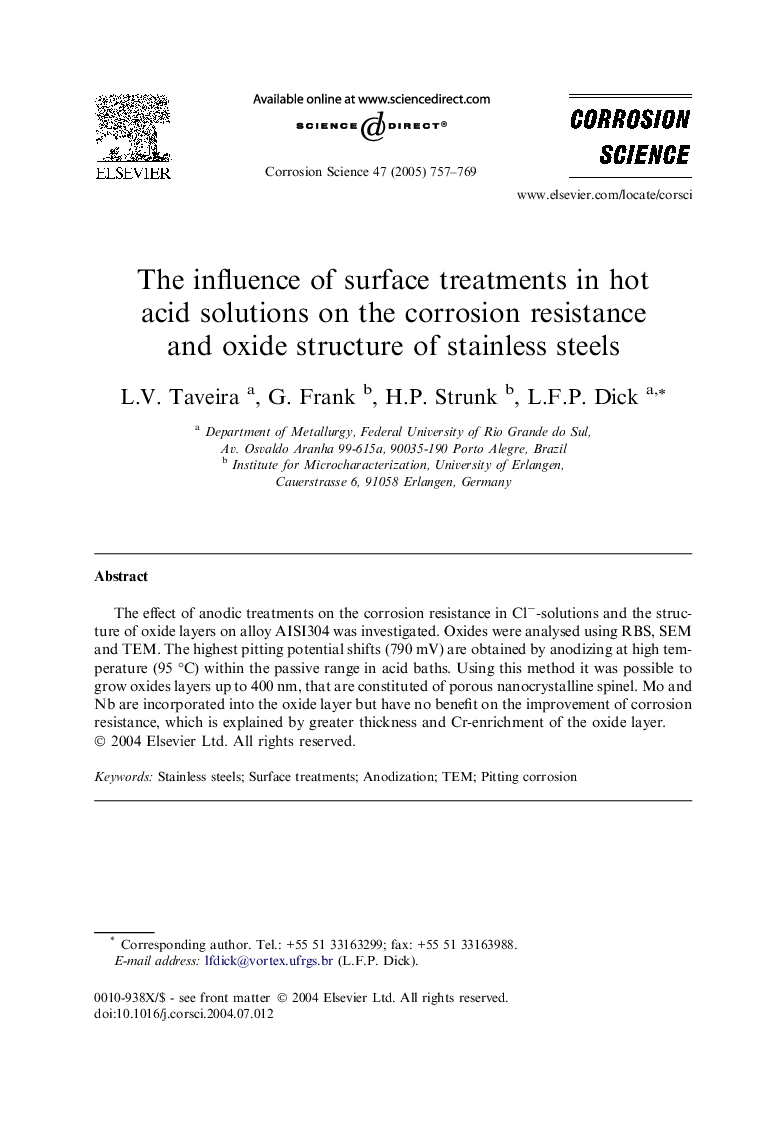| Article ID | Journal | Published Year | Pages | File Type |
|---|---|---|---|---|
| 10628539 | Corrosion Science | 2005 | 13 Pages |
Abstract
The effect of anodic treatments on the corrosion resistance in Clâ-solutions and the structure of oxide layers on alloy AISI304 was investigated. Oxides were analysed using RBS, SEM and TEM. The highest pitting potential shifts (790 mV) are obtained by anodizing at high temperature (95 °C) within the passive range in acid baths. Using this method it was possible to grow oxides layers up to 400 nm, that are constituted of porous nanocrystalline spinel. Mo and Nb are incorporated into the oxide layer but have no benefit on the improvement of corrosion resistance, which is explained by greater thickness and Cr-enrichment of the oxide layer.
Related Topics
Physical Sciences and Engineering
Materials Science
Ceramics and Composites
Authors
L.V. Taveira, G. Frank, H.P. Strunk, L.F.P. Dick,
